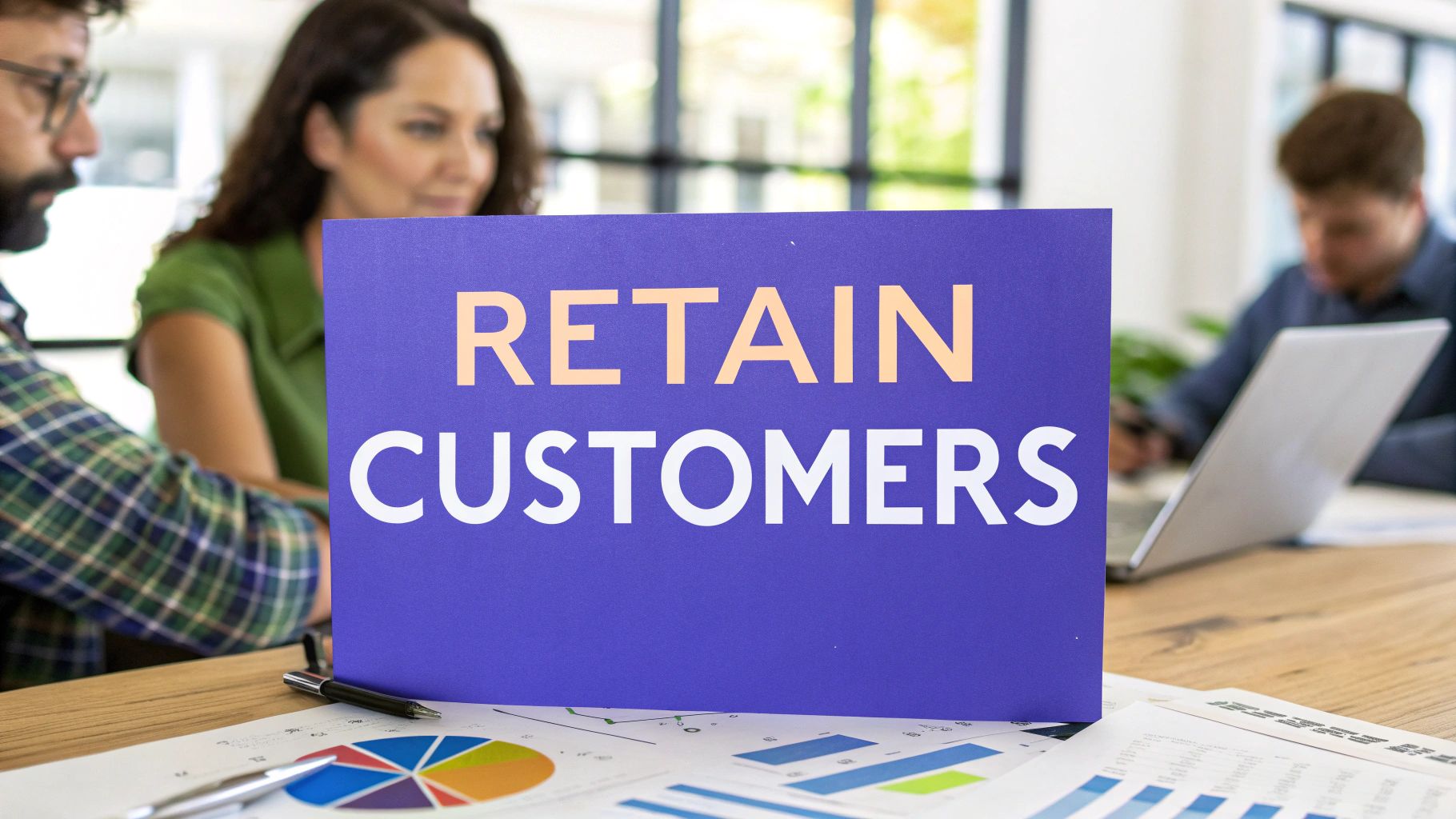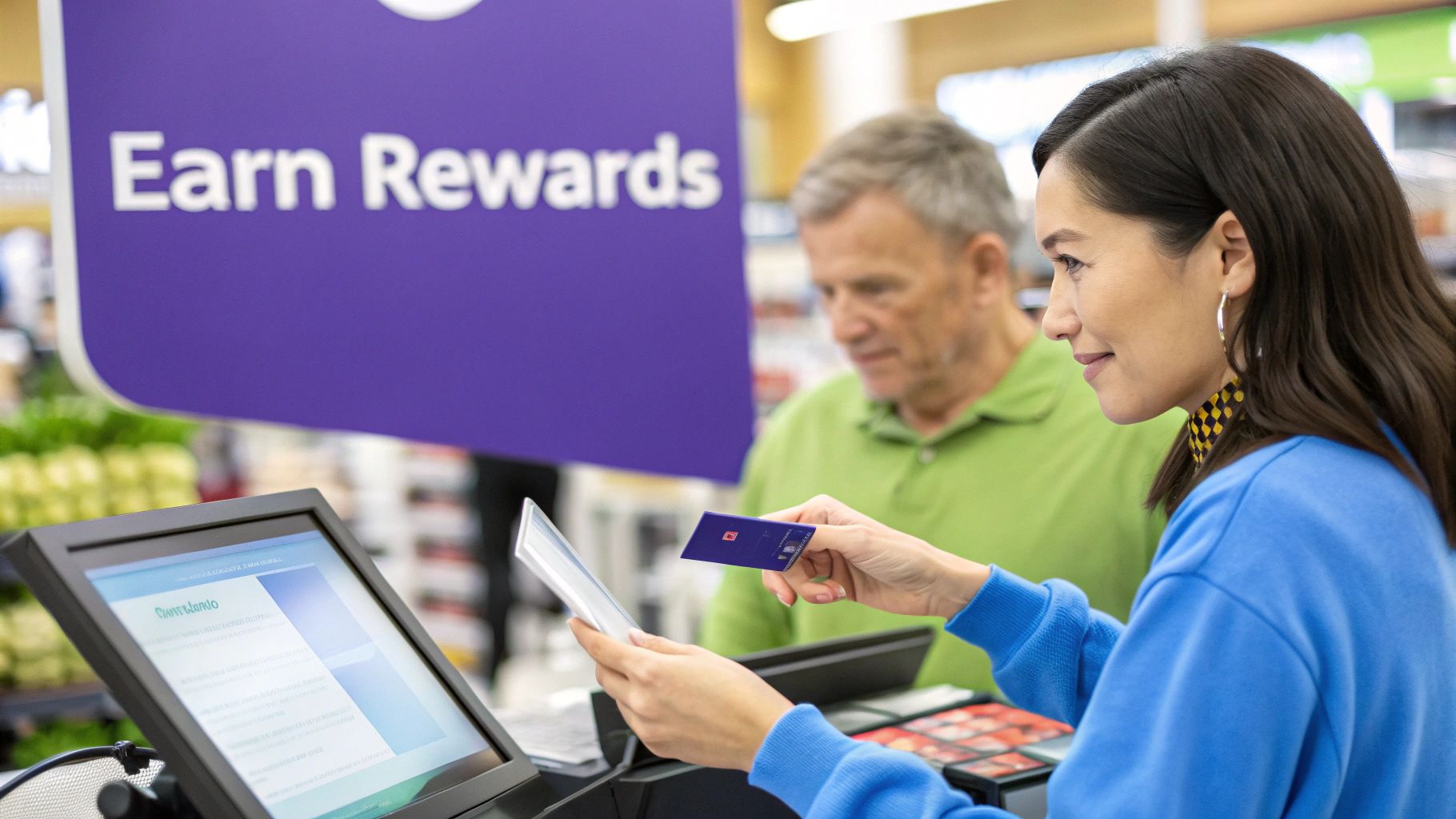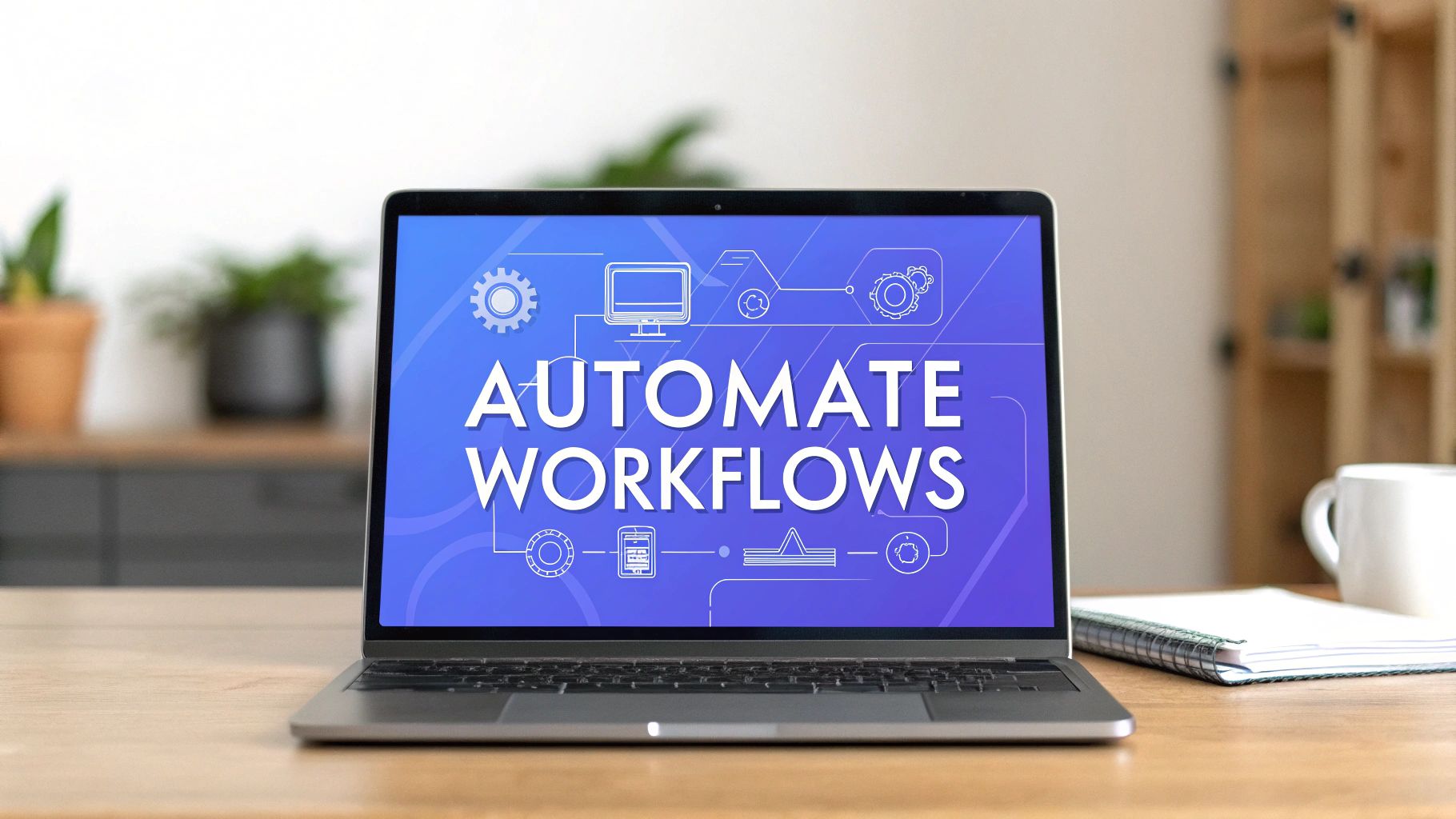10 Customer Retention Strategies That Actually Work in 2025
Discover 10 powerful customer retention strategies to boost loyalty and reduce churn. Learn actionable tips for sales, operations, and success teams.

Looking for ways to grow your business? While chasing new leads is a common focus, the best growth engine might already be in your contact list: your current customers. Keeping clients happy and engaged is much more cost-effective and profitable than the constant cycle of acquiring new ones. Even a small improvement in customer retention can produce a big impact on your bottom line.
So, how do you make sure your customers stick around? This article moves beyond theory and gives you a clear roadmap. We will break down 10 specific customer retention strategies that your sales, operations, and customer success teams can put in place immediately. You will find actionable steps for everything from creating personalized experiences and proactive support to building a brand community and using data to predict who might leave.
Each strategy is explained with practical tips and real-world examples to help you apply these concepts directly. For those who want to continuously explore new ideas on this topic, tuning into expert discussions like Retain: The Customer Retention Podcast can offer fresh perspectives. Let's get into the methods that transform satisfied customers into loyal advocates for your brand.
1. Personalized Customer Experience
A personalized customer experience is a retention strategy that uses data to create unique interactions for each user. Instead of a one-size-fits-all approach, this method uses customer information like purchase history, browsing behavior, and stated preferences to deliver relevant communications, product suggestions, and support. By treating customers as individuals, businesses can build stronger, more loyal relationships.
Pioneers like Amazon and Netflix have shown the immense value of this approach. Amazon's recommendation engine is a major revenue driver, while Netflix's content suggestions keep users engaged and subscribed. This strategy works because it shows customers you get their needs, which increases satisfaction and makes them feel valued.
Why Personalization Boosts Retention
Personalization directly impacts key business metrics by making every interaction more relevant and effective. The following infographic highlights the big returns companies see when they invest in creating these custom experiences.

These statistics clearly show that personalization is a core driver of customer loyalty and profitability.
How to Implement Personalization
- Start with Segmentation: Begin by grouping customers based on shared characteristics like purchase history or demographics. This is a foundational step toward more advanced, one-to-one personalization.
- Focus on High-Impact Areas: Apply personalization first where it will have the biggest effect. Key areas include your website's homepage, email marketing campaigns, and the checkout process.
- Use A/B Testing: Before a full-scale rollout, test different personalization tactics with smaller audience segments. This helps you validate what works best without risking the entire customer base.
- Respect Customer Privacy: Always be transparent about the data you collect and provide clear opt-out options. Trust is a key part of any successful personalization strategy.
2. Loyalty and Rewards Programs
A loyalty and rewards program is a structured marketing strategy made to incentivize repeat business. It offers customers tangible value like points, discounts, or exclusive perks in exchange for their continued patronage and engagement. This approach creates a psychological and economic reason for customers to remain with a brand, turning transactional relationships into long-term commitment.
Industry leaders have built empires on this strategy. Sephora's Beauty Insider program, with over 25 million members, drives 80% of its annual sales. Similarly, Starbucks Rewards has over 31 million active members who generate more than half of the company's revenue. These programs work because they make customers feel recognized and rewarded for their business, which is a core part of effective customer retention strategies.
Why Loyalty Programs Boost Retention
Loyalty programs directly influence customer behavior by creating a compelling reason to choose your brand over competitors. By offering escalating value, they build a sense of progress and investment that customers are reluctant to abandon. The following infographic illustrates the powerful impact these programs have on consumer habits and brand perception.

These statistics confirm that a well-designed loyalty program is a powerful tool for building a dedicated customer base and increasing lifetime value.
How to Implement a Loyalty Program
- Make Enrollment Simple: Remove friction from the sign-up process. Allow customers to join with just an email or phone number at the point of sale or online.
- Offer Immediate Gratification: Provide a welcome bonus, such as instant points or a discount on the first purchase after joining, to show value right away.
- Create Tiers and Goals: Structure the program with clear tiers or milestones that offer better rewards as customers spend more. This gamifies the experience and encourages higher engagement.
- Go Beyond Discounts: While discounts are effective, consider adding experiential rewards like early access to new products, VIP events, or exclusive content to build a stronger emotional connection.
3. Proactive Customer Service and Support
Proactive customer service is a customer retention strategy that involves anticipating needs and addressing potential issues before they become problems. Instead of waiting for customers to report issues, this approach uses data and monitoring to identify early warning signs. By intervening with helpful guidance, solutions, or notifications, businesses can prevent customer frustration and show a genuine commitment to their success.
Companies like Ritz-Carlton and Zappos built legendary reputations on this principle. Ritz-Carlton gives staff permission to spend up to $2,000 per guest to resolve issues on the spot, while Zappos became famous for its above-and-beyond service culture. This method works because it transforms the customer support function from a reactive cost center into a value-adding, loyalty-building engine.
Why Proactive Support Boosts Retention
Proactive support directly improves the customer experience by solving problems before they escalate, which builds trust and reduces churn. When a customer feels a company is looking out for their best interests, their loyalty deepens. It shows you are a partner in their success, not just a vendor.
A proactive approach turns potential negative experiences into positive, memorable interactions that strengthen the customer relationship and drive long-term value.
How to Implement Proactive Support
- Implement Customer Health Scoring: Monitor product usage, support ticket frequency, and other key behaviors to create a "health score" for each account. This helps identify at-risk customers who may need intervention.
- Create Trigger-Based Automation: Set up automated workflows that trigger helpful communications based on specific events. For example, send a tutorial video after a customer uses a complex feature for the first time.
- Give Frontline Staff Authority: Give your support and success teams the authority to make decisions and solve problems without needing to escalate every issue. This autonomy leads to faster, more effective resolutions.
- Monitor Social Media: Actively listen for mentions of your brand on social platforms. Addressing complaints or questions found there publicly shows that you are attentive and responsive to customer feedback.
4. Customer Feedback Loop and Continuous Improvement
A customer feedback loop is a systematic process of collecting, analyzing, and acting on customer insights. Instead of gathering feedback as a one-time event, this strategy creates a continuous cycle where customer opinions directly inform product development, service improvements, and business decisions. This approach shows customers that their voices are heard and that their input genuinely drives change.
Brands like LEGO and Glossier have built incredibly loyal communities using this method. LEGO Ideas allows fans to submit and vote on new product concepts, with popular designs becoming official sets. Similarly, Glossier famously developed its product line based on direct feedback from its social media followers. This strategy works because it transforms customers into active partners, making them more invested in the brand's success.
Why Feedback Loops Boost Retention
Creating a formal feedback loop is one of the most effective customer retention strategies because it shows you value your customers' perspectives. When people see their suggestions put into action, it builds trust and strengthens their emotional connection to your brand. This validation turns passive buyers into vocal advocates who are less likely to switch to a competitor.
How to Implement a Feedback Loop
- Make it Easy to Give Feedback: Integrate simple feedback mechanisms across all channels, such as short surveys after a support interaction, in-app pop-ups, or dedicated feedback portals. The easier it is to share opinions, the more data you will collect.
- Use a Mix of Methods: Combine quantitative data from surveys like NPS with qualitative insights from customer interviews or focus groups. For a deeper view of the customer journey, you should focus on properly analyzing customer feedback.
- Close the Loop: This is the most important step. After implementing a change based on feedback, communicate it back to the customers who suggested it. A simple email saying, "You asked, we listened," can have a massive impact on loyalty.
- Systematize the Process: Create a clear internal process for routing feedback to the correct teams, whether it's a bug report for developers or a feature request for the product team. This makes sure that valuable insights are never lost.
5. Omnichannel Experience Integration
An omnichannel experience integrates all customer touchpoints into one seamless, unified journey. This strategy allows customers to start an interaction on one channel, like a mobile app, and continue it on another, like in-store, without any friction. It relies on shared, real-time data so that every part of the business, from the website to customer service, has the full context of the customer's needs and history.
Companies like Disney and Target master this approach. Disney's MagicBand connects park tickets, hotel access, and purchases into a single device. Target merges its app, same-day pickup, and in-store shopping with unified inventory data. This makes interactions convenient and cohesive, which is a key driver for building loyalty and is one of the most effective customer retention strategies today.
Why Omnichannel Integration Boosts Retention
A disconnected customer journey creates frustration and churn. By unifying channels, businesses remove friction and show a good grasp of the customer's context and needs. This fluid experience makes it easier for customers to engage and complete transactions, which directly improves satisfaction and encourages them to return. The consistency builds trust and makes the brand feel reliable.
A strong omnichannel strategy shows you respect a customer's time and effort by providing a smart, connected experience across every interaction point. If you want to look deeper, you can learn more about what is an omnichannel customer experience on Chatiant.com.
How to Implement an Omnichannel Experience
- Map the Customer Journey: Begin by identifying all key touchpoints and potential friction points where customers switch between channels. This map will reveal where to focus your integration efforts.
- Invest in a Central Data Platform: A robust Customer Data Platform (CDP) is foundational. It unifies customer data from all sources to create a single, real-time view of each user.
- Prioritize Mobile Optimization: Mobile is often the primary channel connecting digital and physical experiences. Make sure your mobile app and website are optimized for seamless cross-channel interactions.
- Train Your Teams: All customer-facing employees must understand the cross-channel capabilities and company policies. They are key to executing smooth handoffs between different touchpoints.
6. Community Building and Brand Engagement
Community building is a retention strategy focused on creating dedicated spaces where customers can connect with each other and the brand. This approach shifts the relationship beyond simple transactions, creating a sense of belonging around shared interests. By becoming a community member, a customer gains value from interacting with other users, not just from the product itself.
This model has been exceptionally successful for brands like Peloton, whose digital community drives a 92% retention rate through leaderboards and social features. Similarly, the Salesforce Trailblazer Community has over 10 million members who share knowledge and advance their careers, deeply embedding them within the Salesforce ecosystem. These communities transform customers into active brand advocates.
Why Community Building Boosts Retention
A strong community acts as a powerful moat, making it harder for competitors to lure your customers away. When a customer feels like part of a tribe, their loyalty is tied to the collective experience, not just the product's features or price. This shared identity and peer-to-peer support system creates big switching costs and deepens emotional investment in the brand.
How to Implement Community Building
- Establish Clear Guidelines: Define your community's purpose, values, and rules from the beginning. This sets the tone for positive interactions and provides a safe environment for all members.
- Use Community Managers: Hire dedicated managers who can authentically engage with members, facilitate discussions, and act as a bridge between the community and the company.
- Recognize Top Contributors: Publicly acknowledge and reward your most active and helpful members. This can be through special titles, early access to products, or other exclusive perks.
- Host Regular Events: Organize virtual or in-person events to strengthen bonds between members. These gatherings reinforce the sense of a shared identity and create memorable brand experiences.
- Integrate Feedback: Show the community its voice matters by visibly incorporating its feedback and suggestions into your product development roadmap.
7. Value-Added Content and Education
Providing value-added content is a customer retention strategy that focuses on educating and helping customers beyond your core product or service. Instead of purely promotional material, this method involves creating useful resources like tutorials, industry insights, and best practice guides. This approach positions your brand as a trusted advisor, building a relationship that provides continuous value between purchases.
Companies like HubSpot have mastered this by offering comprehensive free certification courses through HubSpot Academy, creating immense brand loyalty. Similarly, Home Depot's in-store DIY workshops teach practical skills, directly connecting education with their products. This strategy works because it genuinely solves customer problems, establishing your company as an indispensable resource in their field.
Why Content and Education Boost Retention
Educational content builds trust and authority, making customers more likely to stick with your brand. By helping them succeed, you create a deeper, more meaningful connection that goes beyond simple transactions. This investment in their growth creates a loyal community that sees your brand as a partner, not just a vendor.
How to Implement a Content Strategy
- Solve Real Problems: Use customer support tickets and frequently asked questions as inspiration for your content. Focus on solving the actual challenges your audience faces.
- Align with the Customer Journey: Develop content for different stages, from new user onboarding to advanced user tips. This provides relevance and continuous engagement.
- Repurpose Across Channels: Maximize your reach by adapting a single piece of content into multiple formats, such as a blog post, a video tutorial, a webinar, and social media snippets.
- Showcase Customer Success: Feature case studies and success stories from your existing customers. This provides social proof and offers practical, relatable examples for others to follow.
8. Flexible and Transparent Pricing Models
Flexible and transparent pricing is a customer retention strategy focused on building trust through fairness and adaptability. Instead of rigid, opaque pricing, this approach offers structures that can adjust to a customer's usage, needs, and circumstances. This includes options like pay-per-use models, easy plan upgrades or downgrades, and clear communication about every charge, eliminating surprises and promoting goodwill.
Companies like Slack and Shopify excel at this. Slack's freemium and usage-based tiers lower the barrier to entry and allow teams to scale their investment as they grow. Similarly, Shopify offers clear, tiered pricing that scales with a business's success, with all associated fees communicated upfront. This transparency works because it aligns the company's success with the customer's, creating a partnership rather than a simple transaction.
Why Flexible Pricing Boosts Retention
When customers feel in control of their spending and understand the value they receive, they are less likely to churn. A fair pricing model reduces friction and shows that you respect their business, which is a powerful incentive to stay. Customers who can easily adjust their plan to fit a tight budget are more likely to downgrade temporarily than to cancel altogether.
This strategy directly combats the negative feelings associated with "being locked in" to a service. By offering an easy way out or a way to scale back, you paradoxically make customers want to stay. It shows confidence in your product's value and puts the customer relationship first.
How to Implement Flexible and Transparent Pricing
- Make Pricing Easy to Find: Your pricing page should be easily accessible and simple to understand. Avoid jargon and complex tables that confuse potential customers.
- Offer Self-Service Plan Changes: Allow customers to upgrade, downgrade, or cancel their subscriptions directly from their account dashboard without needing to contact support or a sales representative.
- Communicate Value at Each Tier: Clearly articulate what features and benefits a customer gets at each price point. This helps them make an informed decision and see the logic behind your pricing structure.
- Provide Advance Notice for Changes: If you must increase prices, inform customers well in advance. Explain the reasons for the change, such as new features or improved service, to maintain their trust.
9. Surprise and Delight Moments
Surprise and delight is a powerful customer retention strategy focused on creating unexpected, positive experiences that go beyond a customer's expectations. Instead of simply meeting needs, this approach aims to generate a strong emotional connection by providing memorable gestures. These moments, from a handwritten thank-you note to a surprise upgrade, turn satisfied customers into passionate brand advocates.
Pioneers like Zappos and Chewy have built their reputations on this philosophy. Zappos is famous for upgrading shipping to overnight for free, while Chewy often sends hand-painted pet portraits to loyal customers. These actions create powerful word-of-mouth marketing because they show customers that the business genuinely cares about them as individuals, creating deep loyalty.

Why Surprise and Delight Boosts Retention
This strategy works by tapping into the psychology of reciprocity and positive emotions. An unexpected gift or gesture creates a feeling of appreciation and personal connection, making customers more likely to return and share their positive experiences. It transforms a transactional relationship into a more personal one.
These memorable interactions generate authentic social proof and user-generated content, as seen when Glossier includes surprise samples and stickers that fuel "unboxing" posts on social media. This turns a simple purchase into a shareable event, amplifying brand reach and reinforcing loyalty.
How to Implement Surprise and Delight
- Give Your Team Autonomy: Train all staff to identify opportunities and give them the autonomy to create surprise moments without needing managerial approval.
- Use Customer Data: Use CRM data to personalize gestures. Acknowledge milestones like a loyalty anniversary or their first purchase to make the surprise meaningful.
- Focus on Quality Over Quantity: A few highly personal, meaningful gestures have a greater impact than many small, generic ones.
- Make Unboxing Special: Use thoughtful packaging, inserts, or small freebies to create a memorable unboxing experience that customers will want to share.
10. Predictive Analytics and Churn Prevention
Predictive analytics for churn prevention is a proactive strategy that uses data science and machine learning to identify customers at risk of leaving before they do. This method analyzes behavioral data, engagement metrics, and usage trends to forecast future actions. Instead of reacting to cancellations, businesses can intervene with targeted strategies to address specific concerns and re-engage at-risk customers.
Companies like Netflix and Spotify excel at this, using algorithms to detect subtle shifts in user behavior that signal potential churn. For instance, a decline in workout frequency might trigger Peloton to send motivational content to a user. This data-driven approach allows organizations to move from a reactive to a preemptive stance, significantly improving their retention efforts.
Why Predictive Analytics Boosts Retention
This strategy directly impacts customer retention by identifying problems before they become irreversible. By knowing the leading indicators of churn, businesses can allocate resources more effectively, focusing retention efforts on the customers who need it most. This saves at-risk accounts and provides valuable insights into product or service weaknesses that might be causing friction for a wider audience. For a deeper look into preventing customer attrition, explore these proven strategies to boost retention and reduce churn rate.
How to Implement Predictive Analytics
- Define Churn Clearly: Establish a precise, measurable definition of what churn means for your business. Is it a canceled subscription, a non-renewal, or a specific period of inactivity?
- Identify Leading Indicators: Analyze your data to find the key behaviors that precede churn. Common indicators include decreased login frequency, reduced feature usage, or a spike in support tickets.
- Build Tiered Interventions: Create different retention campaigns based on a customer's churn risk score and their overall value. A high-value, high-risk customer should receive more personalized outreach than a low-value one. You can read more about predictive analytics and its role in churn prevention.
- Combine Data Sources: Integrate quantitative behavioral data with qualitative feedback from surveys and support interactions. This combination provides a more complete picture of customer health.
Customer Retention Strategies Comparison
Start Building Loyalty That Lasts
We've explored a comprehensive toolkit of ten powerful customer retention strategies, moving from the precision of personalized experiences to the foresight of predictive analytics. The path to creating lasting customer relationships is not about a single, magic-bullet solution. It's about a consistent, integrated effort that places the customer at the absolute center of your business operations.
The core principle connecting all these approaches is a shift in perspective. Instead of viewing each customer interaction as a transaction, see it as an opportunity to build trust and deliver genuine value. A well-designed loyalty program is more than just a discount system; it’s a recognition of a customer's commitment. Proactive support is about showing you care about your customer’s success. Each strategy, from building a vibrant community to offering transparent pricing, reinforces this central idea: your business succeeds when your customers succeed.
From Theory to Action: Your Next Steps
Reading about these strategies is the first step, but putting them into action is what drives results. It's easy to feel overwhelmed by the number of options, but you don't need to execute all ten at once. The key is to start small, measure your impact, and build momentum.
Here’s a practical way to begin:
- Identify Your Biggest Opportunity: Review the ten strategies. Which one addresses the biggest point of friction or churn in your current customer journey? Is it a lack of community engagement? Or maybe your customer support feels reactive rather than proactive?
- Start with Customer Feedback: Your customers are your best source of truth. Implement a simple feedback loop, perhaps a quick survey or a few direct conversations, to validate your assumptions. Ask them what would make their experience better.
- Launch a Pilot Program: Select one strategy and launch a small-scale test. For example, you could trial a new rewards tier for your top 10% of customers or create a private channel for a select group to build a community. This allows you to learn and refine your approach without a massive upfront investment.
Mastering these customer retention strategies is not just about reducing churn; it's about building a resilient, profitable business. Loyal customers become your most effective marketers, provide invaluable feedback, and are more likely to support you through market shifts. By making retention a fundamental part of your company culture, you create a powerful growth engine fueled by genuine customer loyalty. This commitment transforms your customer base from a simple revenue source into a true business asset.
Ready to put these strategies into action? Many of the approaches we've discussed, like proactive support and personalized communication, are made simpler with the right tools. Chatiant provides AI-powered customer support solutions that help you engage customers, solve issues faster, and build the lasting relationships that drive growth. Discover how Chatiant can elevate your customer retention efforts today.


